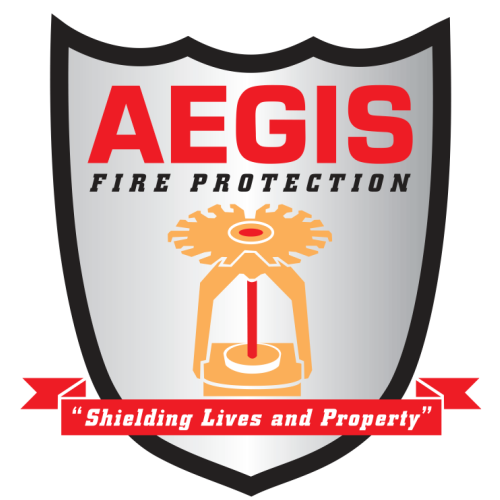Understanding How Fire Sprinklers Work: A Guide to Fire Sprinkler Systems
Understanding how fire sprinklers work is crucial for both residential and commercial safety. These systems are designed to detect and extinguish fires automatically, minimizing damage and protecting lives. The effectiveness of a fire sprinkler system hinges on various components and mechanisms, including pressurized water, temperature sensitivity, and quick response features. In this article, we will delve into the fundamental principles that enable fire sprinkler systems to function efficiently at the moment of fire detection.
Pressurized Water
The operation of a fire sprinkler system begins with pressurized water stored within the piping system. This pressurized water is crucial because it ensures that when a fire is detected, the flow of water can rapidly reach the sprinkler heads. Each sprinkler head is strategically located to provide maximum coverage and is connected to a water supply that maintains adequate pressure. The system is designed so that when the sprinkler head activates due to heat, water flows immediately to extinguish the fire. This quick flow of water is essential in containing the fire, thereby preventing extensive fire damage and allowing for a more manageable situation until the fire department arrives.
In most systems, the pressurized water is contained within pipes that run throughout the building. When a fire is detected, typically by one or two sprinkler heads opening, the water flows rapidly through the piping system, reaching the closest sprinkler head to the fire. The effectiveness of the sprinkler system works to suppress flames and reduce the overall temperature of the environment, which is critical in preventing the fire from spreading further. The national fire protection association recommends regular inspections to ensure that the water supply and pressure levels are maintained, which are vital for optimal fire protection.
Temperature Sensitivity
Temperature sensitivity is a key characteristic of fire sprinkler systems. Each sprinkler head is equipped with a glass bulb filled with a glycerin-based liquid that expands when heated. When the temperature reaches approximately 135°F, the liquid expands to a point where it shatters the glass bulb, causing the sprinkler head to activate. This mechanism ensures that only the sprinkler heads nearest to the fire will open, allowing for a targeted response to extinguishing flames. This level of temperature sensitivity is crucial in preventing unnecessary water damage to areas unaffected by the fire.
Moreover, the design of different types of fire sprinkler heads can vary based on their temperature ratings and intended applications. For instance, residential fire sprinkler systems typically utilize heads that activate at lower temperatures compared to commercial systems, which may be designed for higher heat thresholds. By customizing the activation temperature, these systems can optimize their function, ensuring that they meet specific fire protection needs without wasting water or causing excessive damage. This precision in temperature sensitivity contributes significantly to the overall efficiency of fire sprinkler systems in various environments.
Quick Response
Quick response is a fundamental feature of modern fire sprinkler systems. The ability of sprinklers to quickly activate when a fire is detected can significantly reduce the spread of fire and smoke. As soon as the temperature reaches the predetermined threshold, the designated sprinkler head opens, allowing water to flow immediately onto the flames. This rapid activation is essential in controlling the fire before it can escalate, providing crucial moments for occupants to evacuate and for the fire department to respond. The quick response of sprinklers is particularly valuable in residential settings, where fires can quickly become life-threatening.
Additionally, the design of quick response sprinkler heads allows them to be more efficient in terms of water usage. These systems are engineered to release less water while still effectively extinguishing flames, minimizing potential water damage. This aspect is particularly important in urban environments or densely populated areas where water conservation is a priority. The combination of quick activation and efficient water flow exemplifies how fire sprinkler systems are designed not just to extinguish fire but to do so in a manner that mitigates fire damage and enhances overall safety. Regular maintenance and inspection are necessary to ensure that these systems continue to function optimally, providing peace of mind to homeowners and business operators alike
How are Fire Sprinklers Activated?
When a fire occurs, the heat-sensitive element of the sprinkler, such as a glass bulb, melts at around 135° Fahrenheit, causing it to shatter. This activates the system and opens the valve, allowing water in the sprinkler to discharge automatically. In dry pipe systems, the pipes are filled with pressurized air or nitrogen, which holds back the water pressure until the system is activated by heat. The network of piping ensures that the closest sprinkler to the fire comes to fire first, helping to put out a fire and significantly reduce property damage.
The NFPA (National Fire Protection Association) emphasizes the importance of sprinklers in saving lives; studies show that they can reduce the death rate by up to 87%. In pre-action systems, a fire must be detected before the water is released, providing an extra layer of safety, especially in areas where freezing might occur. These systems prevent freeze damage by using pressurized air to hold back the water until the fire will activate the sprinklers. People think that sprinklers only activate when they see smoke, but they actually respond to the heat in the air around them. When the temperature gets hot enough, the system kicks in, proving that these life-saving devices are essential in any fire safety plan.



